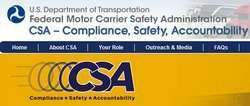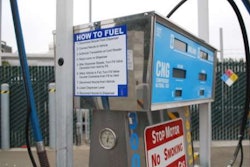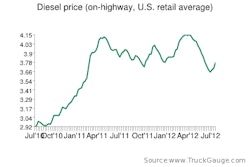
The Federal Motor Carrier Safety Administration on Monday, July 23, announced that it will conduct an analysis to determine if a carrier’s role in a crash is a better indicator of future crash risk under the agency’s Comprehensive Safety Analysis safety regime.
The agency describes the Crash Weighting Research Plan as “a focused initiative” for updating the 100,000 annual state-reported crash records to include a determination of a motor carrier’s role in a crash. According to the agency, crash reports submitted by the states do not include a determination of whether the motor carrier is responsible for causing the crash.
FMCSA, which has long held that the current process of including all crashes a motor carrier encounters to be a good predictor of future crash risk, said it recognizes that additional crash data might further sharpen the ability of the Safety Measurement System to identify carriers that pose the highest risk.
The Crash Weighting Research Plan includes:
• A broad study of police accident reports across the nation to attempt to determine whether they provide sufficient, consistent and reliable information that can be used to determine the carrier’s role in a given crash and what other information, including input from other entities in the outcome of a crash determination, should be used to supplement PARs for maximum reliability;
• Analysis to determine if the carrier’s role in a given crash is a better indicator of future crash risk. If so, the analysis will determine the impact of weighting crashes differently in SMS; and
• Review of research from similar programs in other countries (e.g., Canada) to understand their analysis, processes and applicability to SMS.
The executive summary of FMCSA’s Crash Weighting Research Plan is posted on the CSA Website at http://csa.fmcsa.dot.gov/documents/CrashWeightingResearchPlan_7-2012.pdf.
The results of this study will be available in the summer of 2013. Based on the results, FMCSA will develop the agency’s plan forward for determining a carrier’s role in a crash and the potential use of this new information in the agency’s safety programs – including SMS.
FMCSA Administrator Anne Ferro said the industry can be on the lookout for a Safety Fitness Determination proposal and perhaps a rulemaking in 2013. The SMS replaced SafeStat to determine which fleets should be eyeballed for roadside inspections and to provide fleets with better visibility. Under the Safety Fitness Determination, FMCSA could use that data to replace the onsite inspection process. The American Trucking Associations has asked Ferro to release the full results of the agency’s study on using police reports to determine crash accountability.
In late June, language was added to the CSA Website at http://csa.fmcsa.dot.gov that underscores the lack of crash responsibility in crash data. “We’ve added language to all our Websites to more clearly articulate [the fact that] crash information doesn’t include preventability information,” said Bryan Price, FMCSA senior transportation specialist.
According to the information section of the CSA main site, “a caveat is placed wherever Crash Indicator-related values are shown. The caveat states, ‘A motor carrier’s crash assessment (Crash Indicator BASIC measure and percentile) and the list of crashes below represent a motor carrier’s involvement in 24 months of reportable crashes without any determination as to responsibility.’ ”
The Alliance for Safe, Efficient and Competitive Truck Transportation earlier this month released the results of a study it commissioned of the correlation between individual carrier percentile rankings and crash frequency based upon data obtained from FMCSA’s data bank. ASECTT said the study by Dr. Inam Iyoob, director of engineering at Transplace, shows that with respect to individual carriers, percentile rankings of carriers both above and below the “monitoring thresholds” are not valid predictors of crash frequency.
The study found that regression analysis shows that SMS percentile scores account for less than 1 percent of the variation in crash frequency for each of the Behavior Analysis Safety Improvement Categories. ASECTT said the study shows FMCSA’s data cannot be used to predict the crash performance of individual carriers, even though the agency claims SMS scores are correlated to the average crash frequency of hundreds of carriers at each percentile integral.











